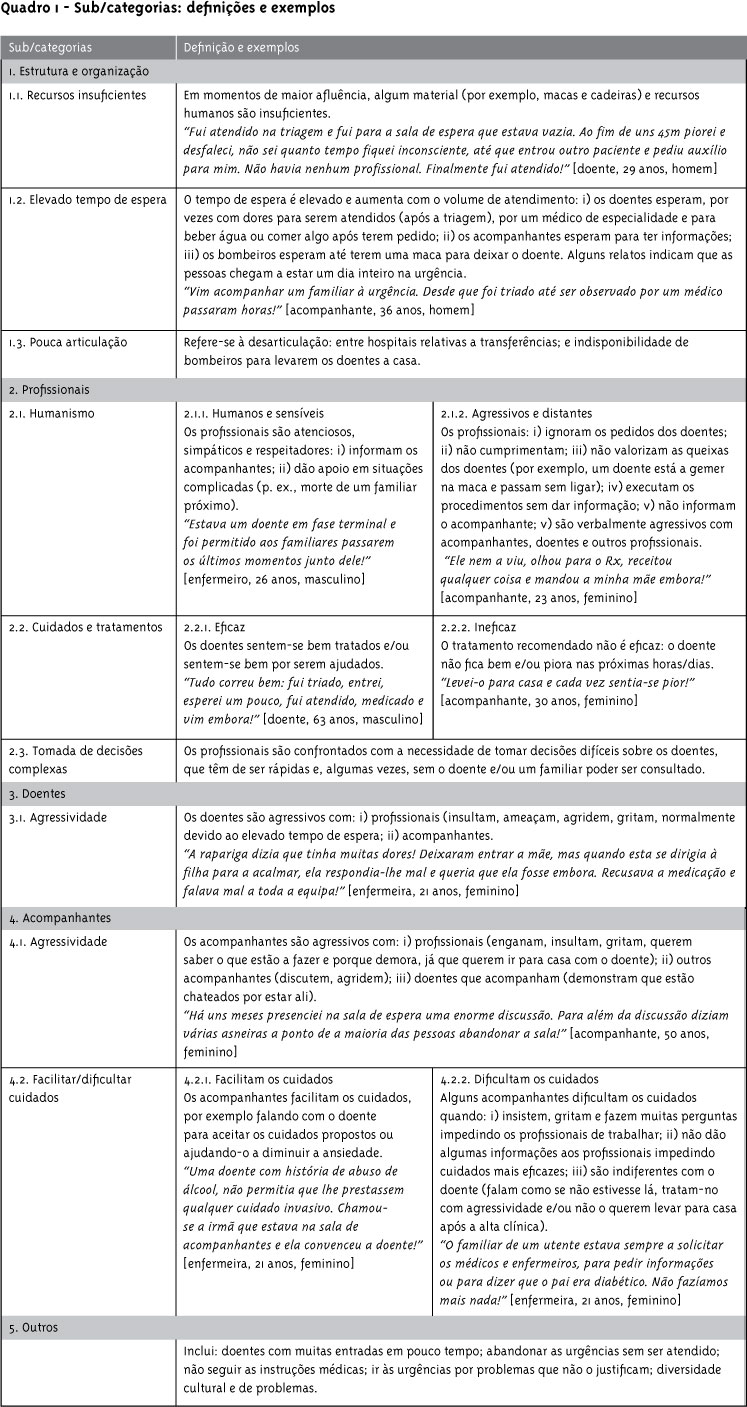Those who accompany a patient in the emergency service, either members of the family or others, are an integral part of the care unit. In Portugal, the usual practice in adults' accompaniment is the permanence in an exterior waiting room. This exploratory study aims at better understanding the emergency service experiences of all those involved, trying to clarify the role of the accompanying person, and reflecting on ways of promoting their participation in the entire process. The Critical Incidents Technique was adopted and administered by interview to 71 participants that represent the several involved parts: 2 administrative workers (2.8%); 7 doctors (9.9%); 9 medical assistants (12.7%); 9 fire-fighters (12.7%); 9 users (12.7%); 20 nurses (28.2%); 15 accompanying persons (21.1%). The main results suggest that: i) participants report more negative incidents (72.9%), related to emotional behaviours and attitudes (such as accompanying person's aggressiveness, professionals' distance and aggressiveness); ii) participants' reference to dissatisfaction or inefficacy of care is rare (4.3% of the incidents); iii) positive incidents are centred on sensitive professionals (50%) and efficacy (25%). The emergency service is an area of emotional storm and it is necessary to rethink the way users are being accompanied by their dear ones.
Accompanying Persons; Family; Emergency Service





